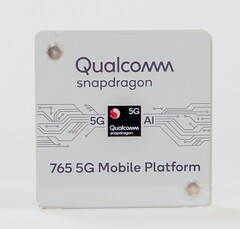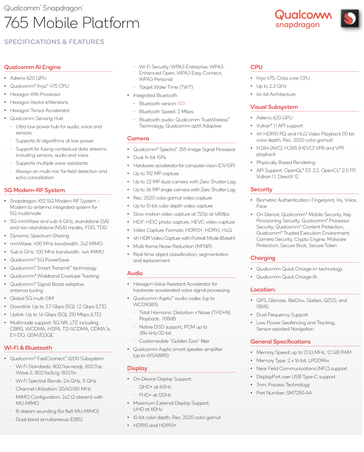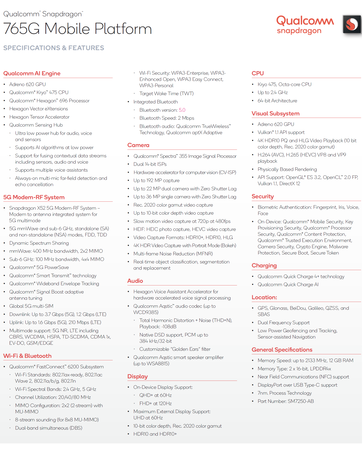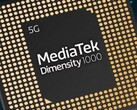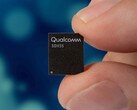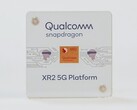Alongside the launch of the flagship Snapdragon 865, Qualcomm also announced the Snapdragon 765 and 765G targeting the upper mid-range segment. The Snapdragon 765/765G can be thought of as cut-down versions of the Snapdragon 865 and feature an integrated on-die 5G modem to promote faster adoption of 5G. Aside from the addition of select Snapdragon Elite Gaming features in the 765G, both SoCs are essentially identical in terms of specifications.
The Snapdragon 765/765G are fabbed on Samsung's 7nm EUV process and integrate the Snapdragon X52 5G modem directly on the die. Essentially, this is Qualcomm's way of asserting that they too can produce SoCs with integrated 5G modems. The X52 supports a range of SA and NSA 5G mmWave and sub-6 GHz frequencies along with support for Dynamic Spectrum Sharing. The X52 can achieve a peak downlink speed of up to 3.7 Gbps and uplink up to 1.6 Gbps on 5G networks.
On the CPU side, we get the octa-core Kryo 475 with a peak clock of 2.3 GHz, with the 765G having a slight boost at 2.4 GHz. Both the Prime and Gold (2.2 GHz) cores are Cortex A76 with the remaining six cores being Cortex A55 ones clocked at 1.8 GHz. While the Snapdragon 865 supports both LPDDR4x and LPDDR5 RAM, the Snapdragon 765 series make do with LPDDR4X up to 2,133 MHz.
The Adreno 620 powers the graphics subsystem. In the Snapdragon 765G, the Adreno 620 is tuned to offer up to 20% more performance than the standard SD 765. The SD 765G also includes select Snapdragon Elite Gaming features such as Game Smoother, Game Fast Loader, and Game Network Latency Manager. The GPU is capable of driving on-device QHD+ displays up to 60 Hz or FHD+ displays up to 120 Hz.
The Spectra 355 ISP can handle up to 192 MP image capture or up to 22 MP dual cameras with zero shutter lag. Similar to the Snapdragon 865, the Snapdragon 765 series can also perform native HDR and 10-bit video capture. The Kryo 475 CPU together with the Adreno 650 GPU and the Hexagon 696 DSP enable the Snapdragon 765/765G to yield 5.5 TOPS of AI performance.
The Snapdragon 765/765G seem to be worthy successors to the Snapdragon 730 that was announced early this year. The specs, however, seem somewhat reminiscent of the Snapdragon 735 that was seen only in leaks but never made it to the market.
We expect these SoCs to be adopted fairly rapidly in the upper mid-range segment. The upcoming Redmi K30 is one such device with many others slated to arrive soon from major Android smartphone OEMs.
Source(s)
Qualcomm Snapdragon Tech Summit
Qualcomm Press Release


 Deutsch
Deutsch English
English Español
Español Français
Français Italiano
Italiano Nederlands
Nederlands Polski
Polski Português
Português Русский
Русский Türkçe
Türkçe Svenska
Svenska Chinese
Chinese Magyar
Magyar